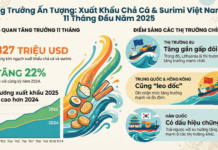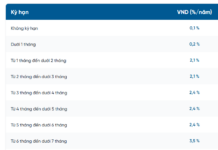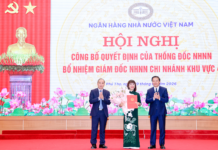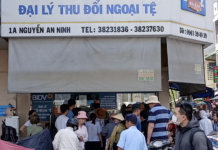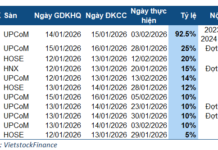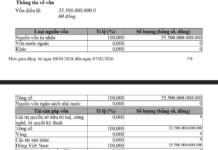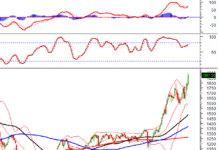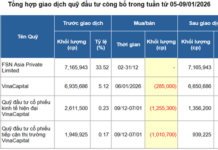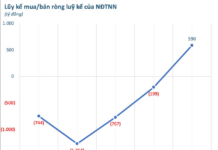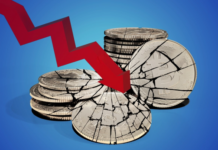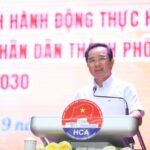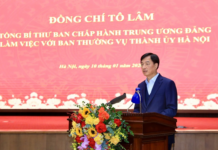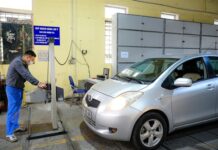During the August 2023 regular government meeting, Prime Minister Pham Minh Chinh reiterated the steadfast goal of macroeconomic stability, inflation control, ensuring major balances, and promoting GDP growth of 8.3%-8.5% by 2025. Public investment is identified as a key driver of economic growth.
Slow Public Investment Disbursement
According to the General Statistics Office (Ministry of Finance), in the first eight months of 2025, the total public investment disbursed nationwide reached only 46.3% of the plan assigned by the Prime Minister, equivalent to VND 409 trillion. Compared to the same period in 2024, the disbursement rate increased by 5.9%, with an absolute capital increase of nearly VND 135.4 trillion.
The Ministry of Finance reported that in the first eight months of 2025, nine ministries, central agencies, and 22 localities achieved disbursement rates exceeding the national average. Among these, some agencies with large capital plans recorded impressive disbursement rates, including: Ministry of National Defense (54.5%), Ministry of Public Security (64.8%), Thanh Hoa (90.6%), Ninh Binh (90.1%), Phu Tho (74.08%), Bac Ninh (64.6%), and Gia Lai (62.8%). Meanwhile, 29 ministries, central agencies, and 12 localities had disbursement rates below the national average.
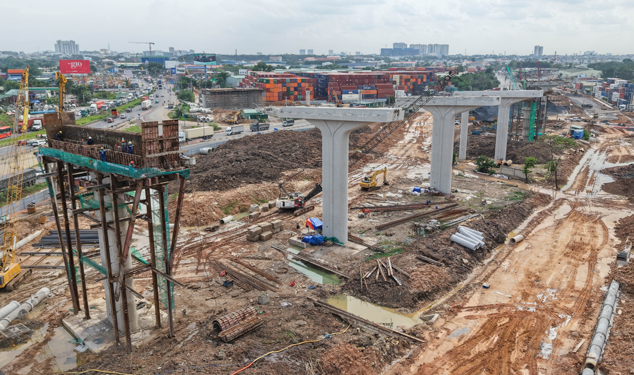
The Tan Van intersection of the HCMC Ring Road 3 project is under urgent construction. Photo: NGOC QUY
The Prime Minister severely criticized 18 ministries, central agencies, and 29 localities for not yet detailing the entire allocated capital plan; 29 ministries, central agencies, and 12 localities with disbursement rates below the national average; and requested these bodies to review and clarify the responsibilities of collectives and individuals, handle according to regulations, and propose immediate solutions.
The Prime Minister also emphasized that slow disbursement has multiple causes, with subjective reasons being primary. Despite similar legal frameworks, some localities perform well while others do not. Additionally, leadership and organization in some ministries, agencies, and localities lack determination, closeness, and political resolve, with leaders’ roles not fully leveraged. Land clearance, compensation, and resettlement in some localities remain slow and bureaucratic, and material supply shortages persist.
Economist Dr. Nguyen Dinh Cung noted that public investment disbursement is hindered by “bottlenecks,” notably land clearance challenges and limited contractor capacity. Project monitoring and evaluation remain passive, relying on administrative reports rather than real-time progress tracking, delaying issue resolution. Improved disbursement, Cung said, will boost GDP growth.
Two Decisive Pillars
At the seminar “Promoting Sustainable Infrastructure Investment in Vietnam: Credit Guarantee Tools – Success Stories and Breakout Potential,” organized by VIS Rating in HCMC on September 24, Mr. Phan Duc Hieu, Standing Member of the National Assembly’s Economic Committee, stressed that infrastructure development is a strategic, long-term task to drive economic growth. This solution has been consistently emphasized in National Assembly and government resolutions since late 2024. “Amid global volatility, Vietnam is committed to economic growth through strategic solutions, focusing on institutional reform and robust infrastructure investment,” he said.
According to Mr. Phan Duc Hieu, the government has identified these as two decisive pillars to achieve over 8% growth in 2025 and long-term sustainable development. Priority is given to key transport infrastructure projects with significant regional impact, such as the North-South Expressway and connections to key economic regions; high-speed rail lines, especially the North-South High-Speed Rail with an estimated investment of $67 billion. These large-scale projects fall under the National Assembly’s public investment authority.
However, Oxford Economics estimates that by 2040, Vietnam needs over $600 billion for infrastructure investment, with a funding gap of hundreds of billions. “This is challenging but achievable with the right approach. Beyond state budgets, private and foreign investment, infrastructure bonds, international capital, and infrastructure funds are potential sources. Institutional quality, transparency, and effective project governance are key to attracting long-term capital,” Mr. Phan Duc Hieu noted.
Flexible Capital Reallocation Needed
With public investment exceeding VND 1,000 trillion, 2025 is critical for economic growth. The government stresses greater determination from all levels to achieve 100% disbursement.
In the latest directive on public investment disbursement, Prime Minister Pham Minh Chinh urged ministries, sectors, and localities to prioritize public investment as a key political task, crucial for evaluating organizational and individual performance. Leaders must take responsibility, assign project oversight, and individualize accountability for task completion.
The Prime Minister directed weekly, monthly, quarterly, and annual disbursement plans for each project to ensure effective solutions, enhanced supervision, and accelerated implementation. With the spirit of “overcoming sun, rain, and storms,” “working day and night, even on holidays,” and “only moving forward, not backward,” capital should be promptly reallocated from slow-disbursing to well-performing projects as needed.
Hanoi Chairman Tran Sy Thanh proposed swift issuance of the PPP Law implementation decree, especially for BT contracts using land funds. The city pledges decisive action to achieve 100% disbursement in 2025 and carry-over capital from 2024.
Dr. Nguyen Dinh Cung suggested studying effective land clearance and resettlement practices to develop a National Assembly resolution for uniform application. “Localities can adapt this resolution to their specific conditions,” he advised.
Avoid Year-End Rush
Dr. Bui Tien Hanh of the Academy of Finance recommends quarterly management to avoid year-end capital rushes. This ensures even and efficient allocation. He proposes concurrent land clearance and project approval, with rewards and penalties tied to disbursement progress. Conditional fund transfers should be allowed for flexibility while maintaining fiscal discipline.
Slow Disbursement for Xuyen Tam Canal Project
The Xuyen Tam Canal improvement project (from Nhieu Loc-Thi Nghe Canal to Vam Thuat River), spanning Binh Loi Trung, Gia Dinh, Binh Thanh, and An Nhon wards, is a key HCMC infrastructure project with over VND 17.2 trillion in investment. However, disbursement is slow, with VND 14 trillion allocated for compensation and resettlement. Only VND 174.3 billion (9.37% of 2025 plan) has been disbursed, mainly for the XL-03 package.
The XL-03 package, from Luong Ngoc Quyen Street to Vam Thuat River, started in May 2025 but has completed only 6% due to intermittent land handover. Packages XL-01 and XL-02 face greater challenges with low resident relocation rates and paperwork issues.
The project management unit urges relevant agencies to resolve issues promptly to ensure project progress and disbursement.
N.Quý
(To be continued)
Satellite City Real Estate Prices 40-50% Lower Than Central Urban Areas
Mr. Nguyen Khanh Duy, Director of Residential Sales at Savills Vietnam, asserts that property prices in satellite urban areas of Ho Chi Minh City are currently 40-50% lower than those in the city center.
Southern Real Estate Embraces Airport Corridor Urban Development
The development of Long Thanh Airport, metro lines, highways, and ring roads is reshaping Ho Chi Minh City’s urban landscape, propelling growth in satellite markets centered around integrated urban complexes, according to Dr. Nguyen Tri Hieu, a leading banking and finance expert.




